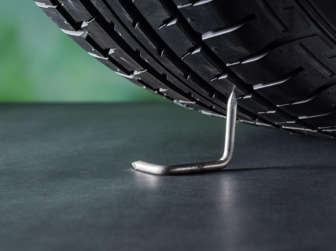A good clutch can make all the difference between your car feeling like an extension of the your body or it feeling completely alien. The good news is that the clutch can be maintained quite easily with good vehicle maintenance and driving skills. It is, after all, a mechanical device and knowing how it works will allow you to keep it in top shape so that the car feels just right. Today we have compiled a list of simple things you can do to help you increase your clutch lifespan, ensuring it performs at its best for a long time.
This might be an odd thing to say about something operated by a pedal but there is a good reason behind it. Without going too much into the engineering side of it, understand that the clutch is meant to be operated either completely engaged or completely disengaged. Keeping the clutch pedal slightly depressed (known as “clutch riding”) should be avoided at all costs. There might be cases where you have to do a bit of clutch riding, especially when starting to move from a standstill but in all other cases where it can be avoided, it should be. Clutch riding reduces the efficiency of the clutch by wearing it down and soon you will experience all sort of troubles like false shifts, gears not shifting properly, loss of power and a lot of noise and heating issues.
Usually, drivers resort to clutch riding to drive a bit more smoothly. Instead, time your gear shifts, acceleration and braking in such a way that there is no jerking motion from the car. This is the more difficult technique to use but is the right and only way to do so. Even race car drivers who don’t have to worry about making an engine last for years are asked not to ride the clutch, which shows how detrimental it is to the clutch.
Another rather common but highly damaging habit that most drivers have is revving the engine when the clutch is still engaged. The engine revs a lot faster when the clutch is engaged and the high RPMs encountered in such cases can be lethal to the clutch. Many do this inadvertently during gear shifts where they are still revving the engine while depressing the clutch pedal to change gears and the clutch pedal is usually still partially depressed when they begin revving again after shifting gears. Time the gear shift and acceleration in such a way that the RPM never spikes and the entire operation takes place smoothly.
Then there are some who willfully rev the engine with the clutch depressed to make noise and "feel the power" of their car but cool as it may seem in the moment, it can actually damage the clutch to the point where all the car will be good for is to make some noise. Also, remember the clutch assembly is an expensive part of the car and you are destroying it for just a few moments of fun.
You might feel good setting off from a traffic light as if you are escaping from a fire or coming to a stop really aggressively, but it puts huge amounts of force and stress on the different components of the car, including the clutch. Also, contrary to popular belief, it isn't cool driving like a maniac, either. (Read more: New Year’s resolutions for SA drivers)
The clutch is supposed to be engaged when the engine is at idle RPMs. Always be aware of the conditions around you and start slowing the car down well in advance of when you have to stop. This will allow you to avoid situations where you have to drop the clutch at high RPMs which can lead to clutch slippage as well as more permanent damage.
If a novice driver is put on a hill-climb situation without any previous know-how then they will inadvertently end up riding the clutch. Clutch riding on a hill climb is even more detrimental to the clutch and should be avoided at all costs. The answer is to use the hand brake instead of riding the clutch. Again, this is not something that comes naturally to most people and as such can be a bit difficult to implement. However, not only is it the right way from the point of view of clutch longevity but also from the point of view of safety.
Keep an eye and ear out for signs that the clutch is not operating in an optimum manner. The most important thing to watch out for is a slipped clutch. If the gears are shifting too easily and the engine revs abnormally then it is a sign of the clutch having slipped. Also watch out for noises or a burning smell. If anything feels wrong with the clutch then do not keep driving your vehicle. Instead, have it checked by a professional so that corrective measures can be taken immediately before the clutch is damaged beyond repair. (A Vehicle Maintenance Plan through MotorHappy will help you budget for unforeseen vehicle expenses. Click here to find out more.)
The clutch is one of the most vital parts of a car and with these tips you can ensure that it keeps performing at its best for a long period of time.
Read more about vehicle maintenance:
Symptoms of worn shock absorbers
How to parallel park like a pro
Ineos Grenadier: A powerful new SUV on SA’s roads


